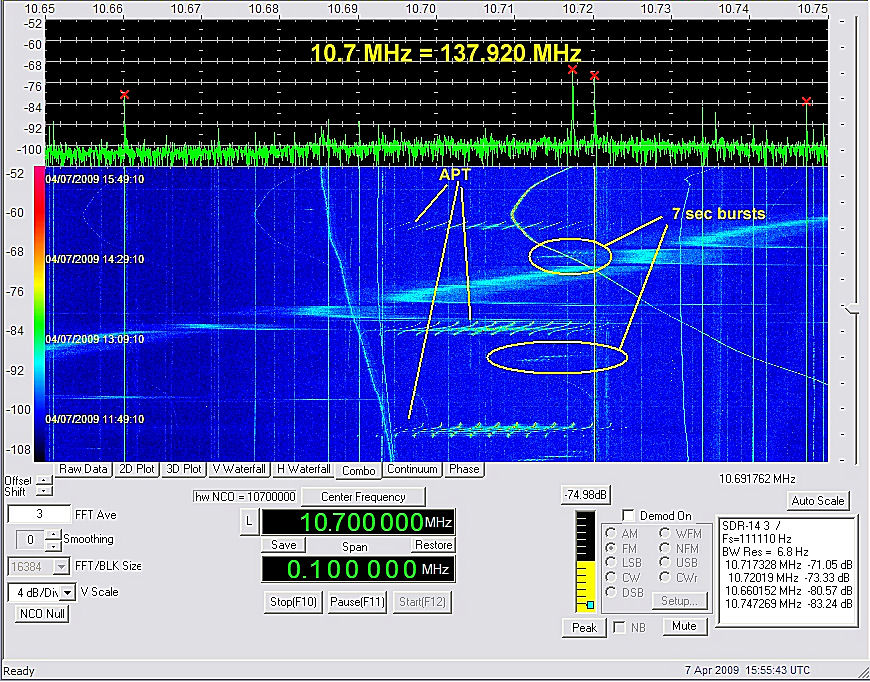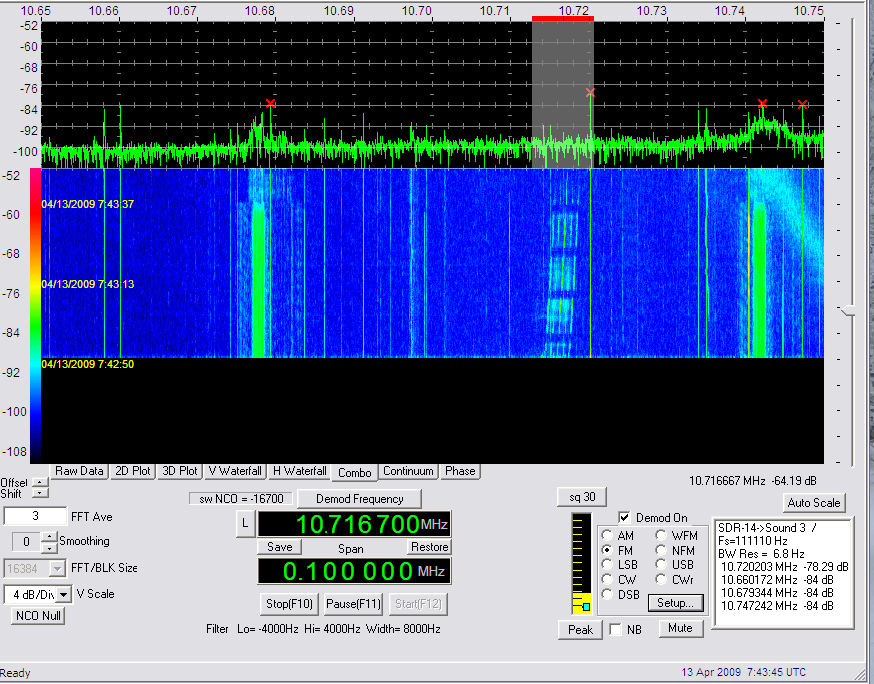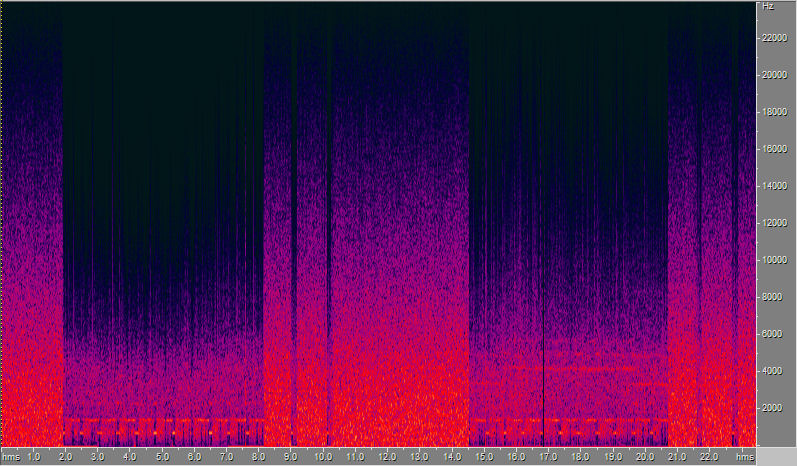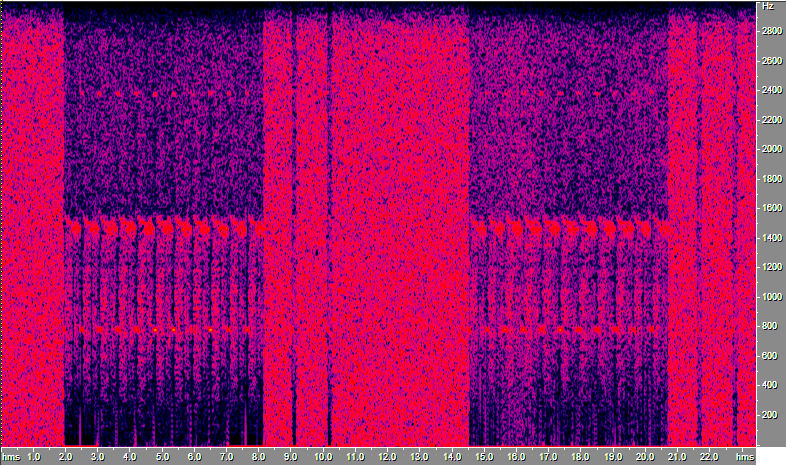
Sven Grahn
On 5 April 2009, while listening for APT signals on 137.9125 MHz from NOAA 19 I stumbled upon signal bursts on 137.905 MHz that is narrowband and frequency modulated. One can see the burst signals in the waterfall from April 7 2009 below (disregard all the wandering carriers - that is typical of this frequency band):

The bursts can be seen in a waterfall from 13 April 2009 MHz

The following observations have been made so far. The times given below are estimates of the closest approach of the signals. The times may be off by as much as 3-4 minutes. The waterfall updated once every minute and with abit of bad luck the transmitter was silent as the waterfall updated.
The orbital period seems be somewheer i the interval 99-102 min. The orbit is not sun-synchronous, it apperas, because the last pass on 13 April occurred about 5 hours earlier than 6 days earlier.
I used the built-in FM demodulator in the SDR-14 softare to obtain the spectrum below (using Adobe Audition). The horizontal scale goes from 0 to 22 seconds. Interestingly, in the second burst one can see three subcarriers. A wav-file of this signal is available here.

Here is a resampled version of this signal showing the lowest 1500 Hz of the audio spectrum:

Loren Moline, WA7SKT, helped my find the source of the signals. They come from Megsat-1, as you can read in Maik Hermenau's excellent frequency list. Megsat-1 has Space Command caatlog number #26546 and UN registration number 2000-57B. It was launched by a Dnepr rocket from Baikonur on 26 September 2000 into an initial 640-644 km, i=64.6 deg orbit.
![]()